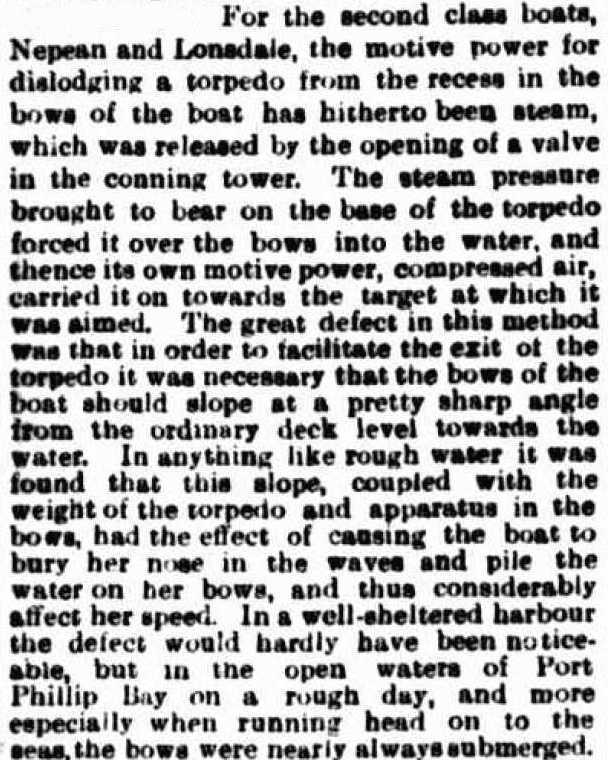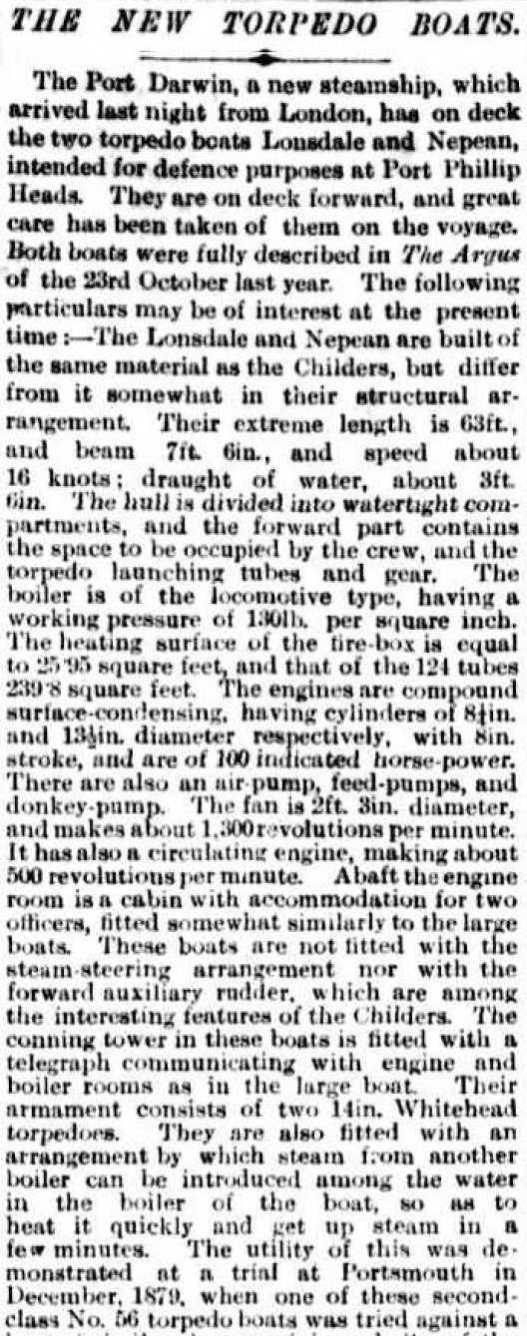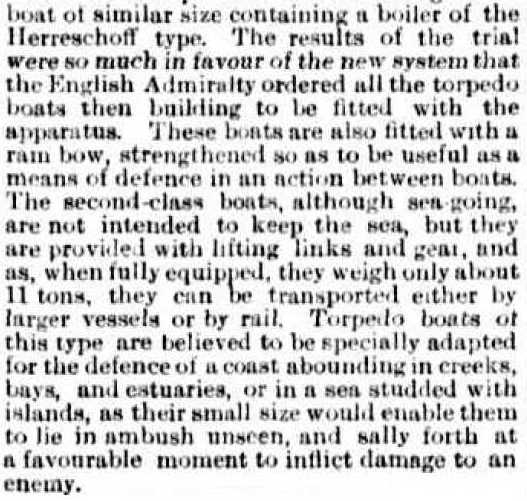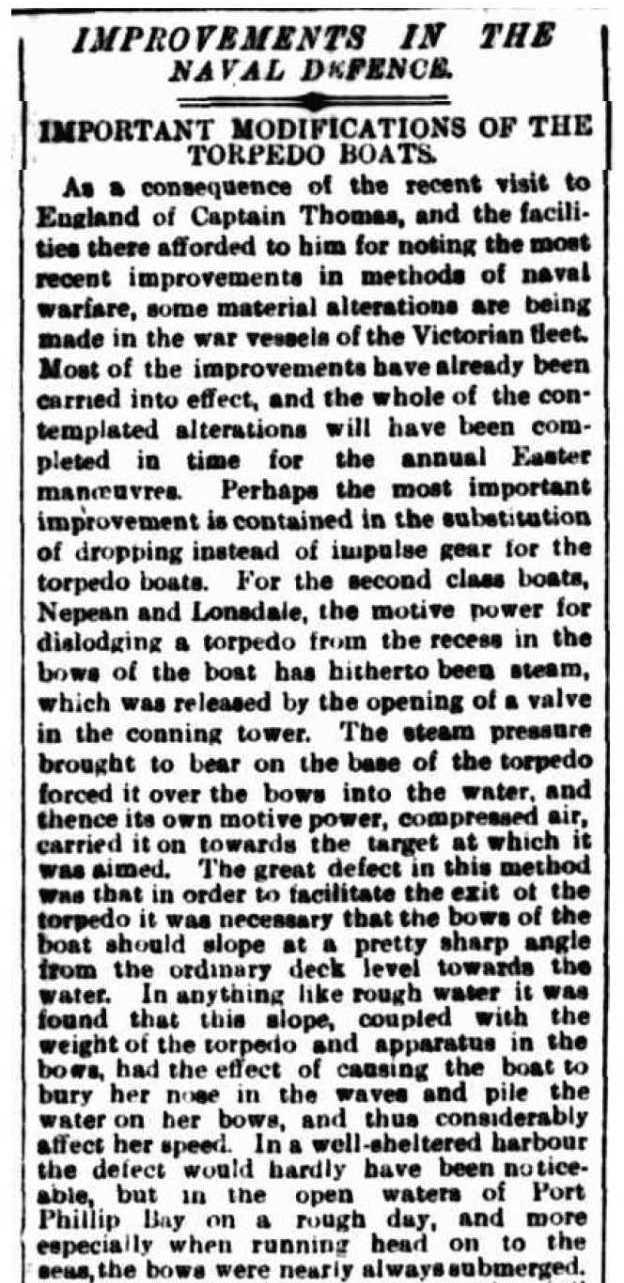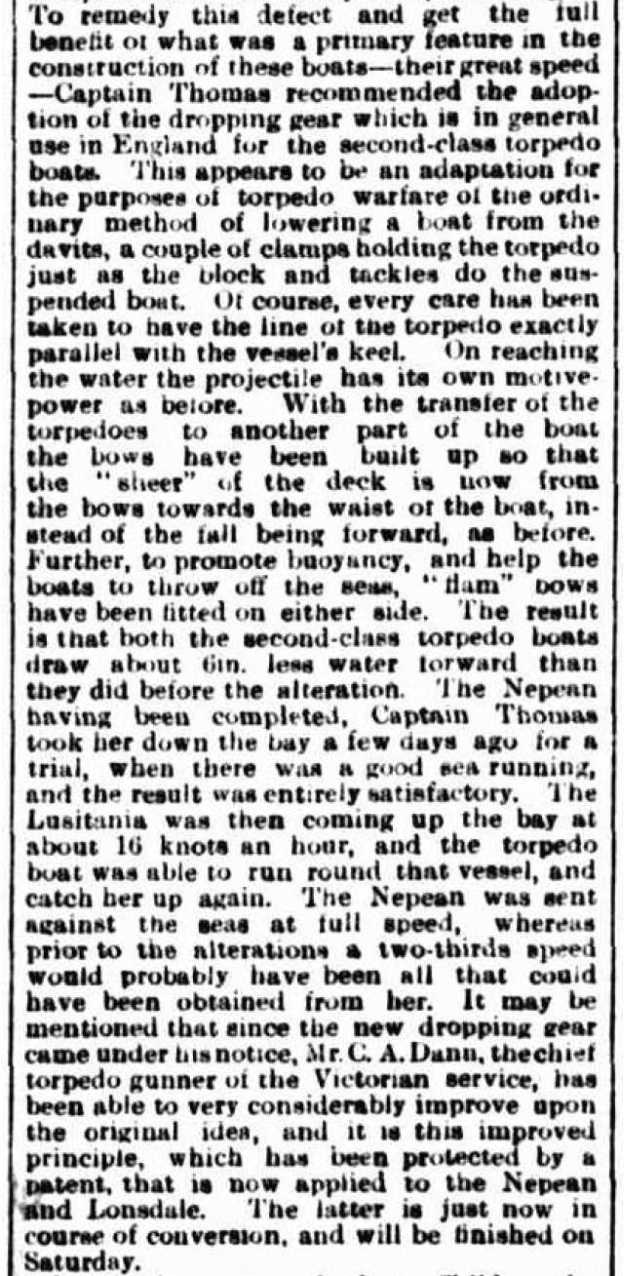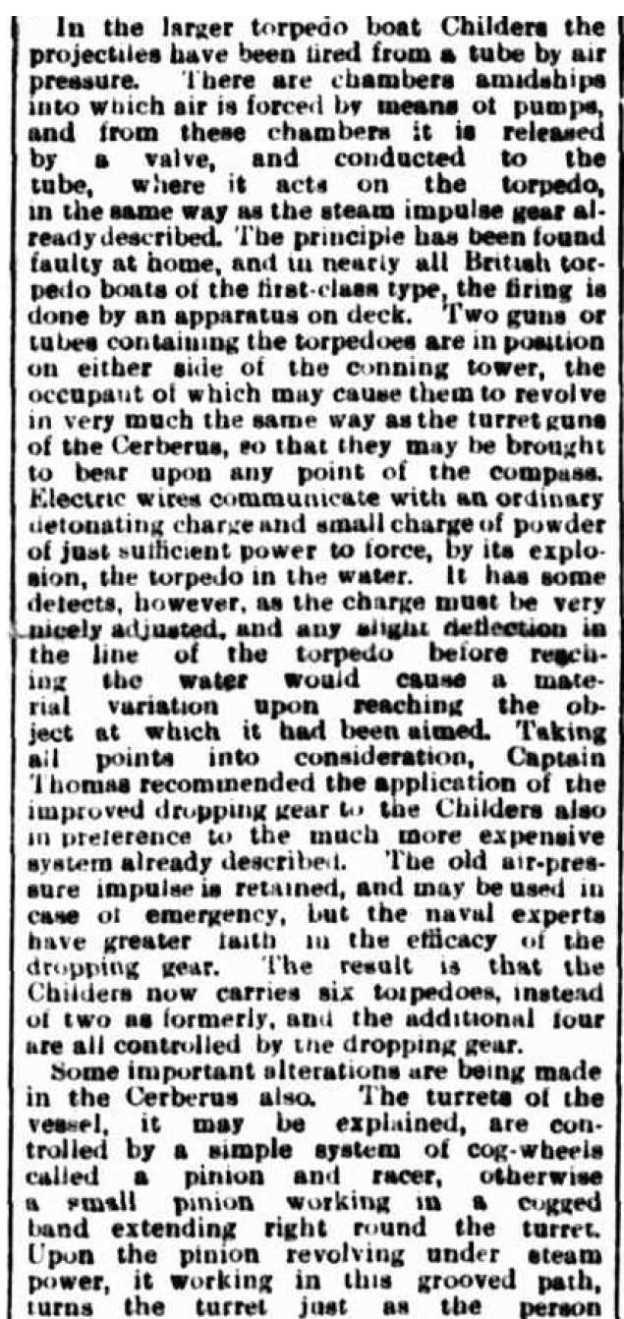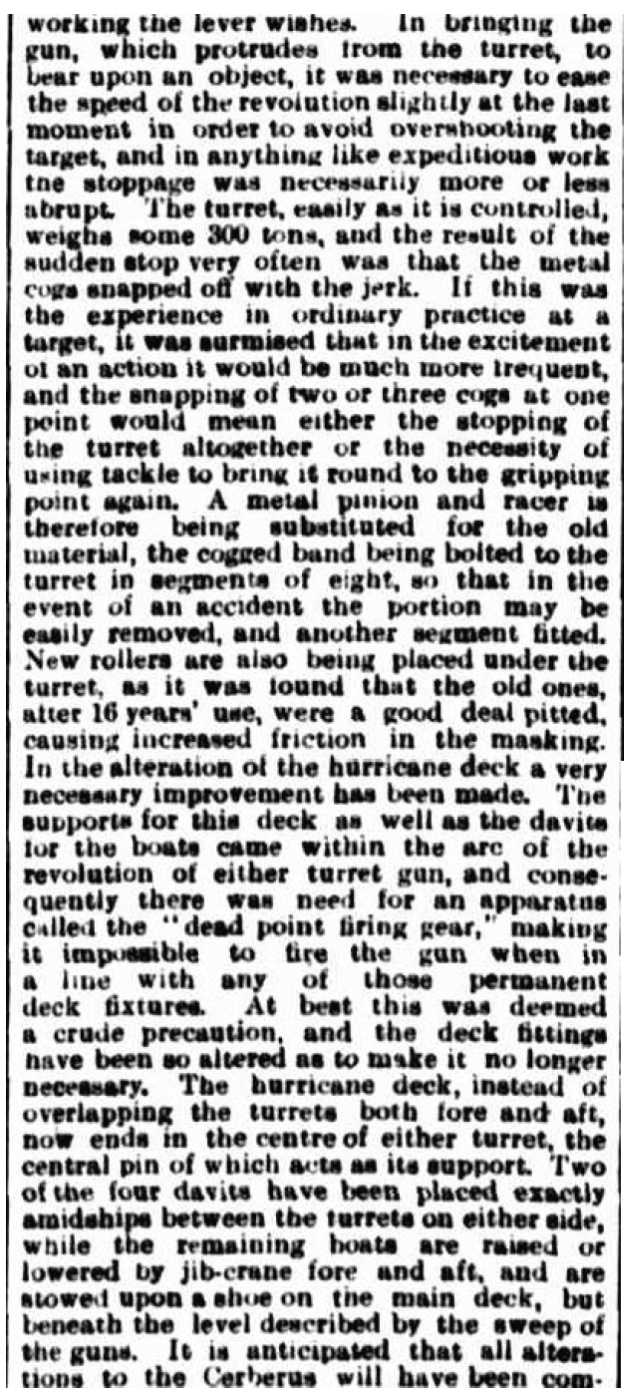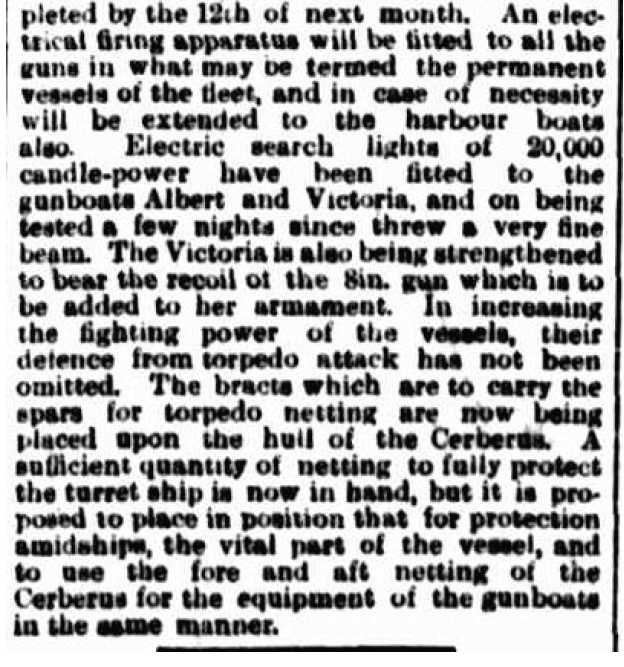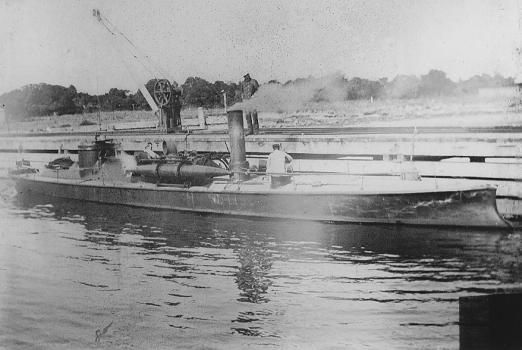
|
Specifications
|
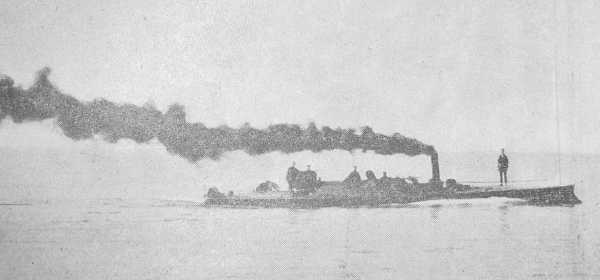
The two second-class torpedo boats constructed by Messers. Thornycroft, of Chiswick, were tried over the measured mile at Long Reach on Thames, below Greenwich, on 20th of March. The boats, in charge of Mr. Brown, chief engineer of the constructing firm, appeared off the Westminster pier at 10 o'clock in the morning, and attracted considerable attention. Mr. Brown received on board Mr. Soper, of the Engineers department of the Admiralty, to report on the result of the trip; Major-General Stuard, representing the agent-general of Victoria; and Colonel Malcolm, of the Marine Mining department of the Admiralty. The boats are each 67 ft. in length with 7ft. 6in. beam, and are fitted with seven water-tight compartments. They are furnished with compound engines of 150 indicated horse-power. Projecting above the bows are two tubes for discharging the Whitehead fish torpedoes, to be projected by steam impulse.
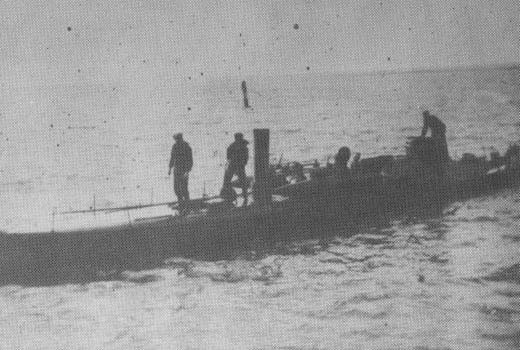
The speed guaranteed under contract was 17 knots, or about 20 miles, per hour. The weight to be carried in the absence of the torpedoes, which in active service would be on board, was to be one ton and a half, including coal, water and crew. The little ships themselves weigh 13 tons each, and are made to lift inboard an ocean-going ship, and to be conveyed down to their port of embarkation on railway trucks.
The torpedoes to be carried are of regular approved construction, consisting of three
compartments, the first charged with about 80lb. of gun-cotton, the second with compressed air, and the after compartment with the machinery to be set in motion by the steam impulse, and to drive the torpedo through the water at a depth of about 9ft. below the surface, until the impact againt the object to be destroyed explodes the torpedo.
Up to a distance of 1,000 yards an effective blow could be given that would be quite sufficient to explode the charge, although the precision of aim would, of course, be more certain when the machine is launched against a foe at half that distance. In point of fighting tactics, the object is to evade the shot of the enemy by means of rapidity of action, the comparative smallness of the exposed surface, and the difficulty there would be in any enemy observing the diminutive craft, especially in the smoke and turmoil of a naval engagement.
Constructed of Bessemer galvanised steel throughout, the conning tower or lookout is the only part of the vessel that is shot-proof. It would indeed be almost impracticable to render these boats, consistently with speed and handiness, impenetrable by the Nordenfeldt machine gun, or even the bullets of a Gatling. All told, the crew of each boat consists of two stokers, two engineers, the steersman, a man to work the torpedoes, and the lieutenant. All except the steersman are completely under cover, and even the steersman in his lookout tower is vulnerable only in the head. Each water-tight compartment is fitted with steam electrics to draw out whatever quantity of water may be lodged there by leakage or fracture.
Steaming down the river at a propulsion of 670 revolutions per minute, the boats, known by their numbers as 189 and 190, were promptly set on the measured mile. A fairly strong southerly breeze blew in the teeth of the waspish little crafts as they dashed along roughish water at low tide, retarding them to considerably greater extent when going in the one direction than assisting them when going in the other.
Six runs were made by each vessel each way, yielding in the one case an average, under some-
what adverse circumstances of 17.16 knots per hour, and in the other of 17.59 per hour.
The times made by No. 189 over the measured mile were 3m. 23s., 3.44, 3.19, 3.39, 3.19,
and 3.40; by No. 190 the recorded times were 3.26, 3.24, 3.24, 3.24, 3.26, and 3.24.
The three-bladed propellers are of steel, 2ft. 10in. diameter, and of 3ft. 9in. pitch.
The draft of water is 3ft. 7in. aft and 1ft. 6½in. forward.
The two boats will be taken down to Portsmouth by train, as a less expensive method than by
running them on their own bottoms by sea, subject to the expense of pilotage and the risk of
storm. Eight torpedoes, manufactured at Woolwich at a cost of about £400 each, will be put on board, and practice will be made with the blank charges to test the discharging and driving machinery. The boats will be shipped to the colony by steamer in about three weeks.
The two second class torpedo boats for the Victorian Government are not in such an advanced stage as the first-class boat; indeed, they will not be ready for launching for some months. They are built after the approved type adopted by the Admiralty. Their dimensions are - Length over all, 63ft. beam 7ft. 6in., draught forward, 13in., aft, 3ft. 2in.; displacement 12½ tons. As they belong to the auxiliary type of boat, and will usually be carried on the deck of the vessel to which they are attached, they will be fitted with permanent lifting gear, by which they will be quite easy to lift them into and out of the water.
The machinery will consist of a compound surface condensing engine indicating 170 h.p., and capable of developing a speed of at least 16 knots. All the boats will be divided into watertight compartments.
The Admiralty vessels discharge their Whitehead torpedoes by a steam ejecting apparatus over the bows. This ejecting apparatus has been described as consisting of a couple of troughs on the deck on each side of the bow of the boat, containing the necessary guides for directing the course of the torpedo and fitted at their after ends with steam cylinders 4¾ ft diameter x 7ft. stroke, so arranged that on the admission of steam from the boiler the piston is projected forward, and the torpedo sped on its course. The great advantage of this type of ejecting apparatus is that the torpedo may be discharged while the boat is running at full speed. Thornycroft and Company, however consider that the air impulse is préférable to the steam impulse apparutus for ejecting torpedoes, and therefore recommend the Victorian Government to adopt that system for all their boats. No decision has yet been arrived at, but it is probable the advice of the builders will be accepted.
